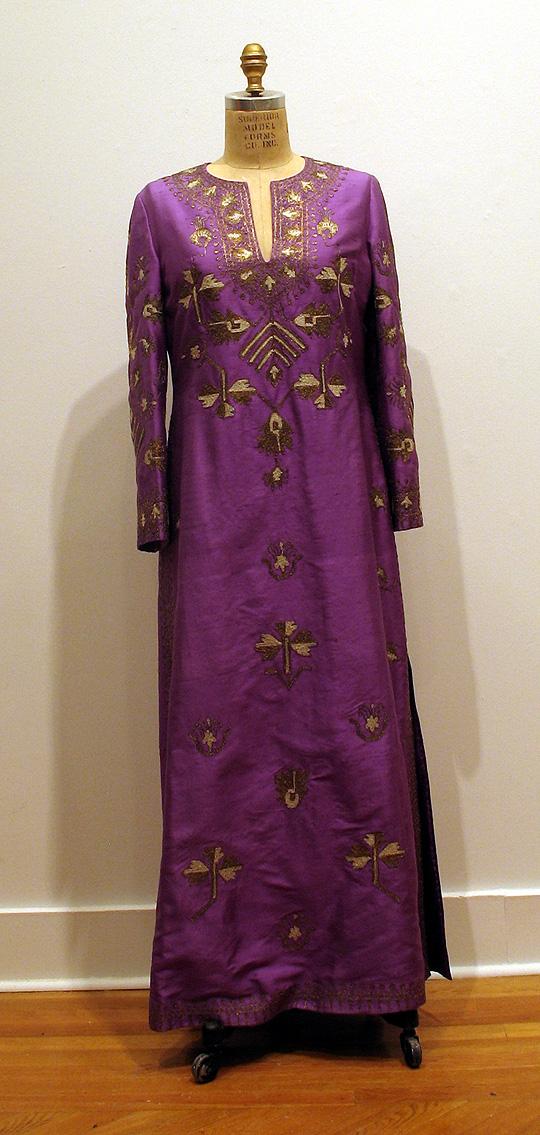
Origin: France
Year: Late 20th Century
Collection: Queens College Costume Collection
Identification number: 216.96.15
Materials: Purple silk with metallic embroidery
This elegant dress made of purple silk shantung probably dates from the late 1970s or ‘80s. A woman’s garment inspired by a traditional caftan, it has tapered, set-in sleeves, and is cut closer to the body with bust darts to provide greater fit.
It is elaborately decorated with machine embroidery in stylized organic shapes. In traditional culture, hand-crafting was both an economic and technological necessity as well as a spiritual activity that afforded the artist a place of high social esteem. Thus, unlike the Bedouin robe, the embroidery bears no spiritual meaning, in spite of its beauty. The adaptation of the originally male caftan to women’s wear also digresses from tradition.
However this adaptation does have modern social and cultural significance. It manifests the period’s fascination with “other” cultures popularized by the “hippie” movement in the 1960s and reflects the choice of unconstructed clothing by the women’s movement in different historical periods–embraced then as it was in other eras of women’s liberation.
